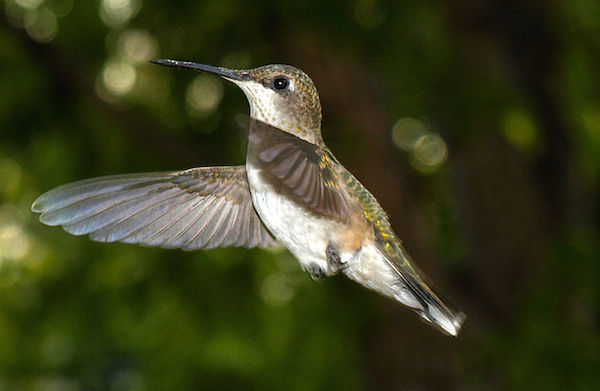
October is officially here and the weather around most of the country is slowly starting to cool down (a little too slowly in some parts!). October is a great time to reassess your bird feeding habits and to thoroughly clean everything, from birdhouses to bird feeders.
But there’s that one nagging question you might have: Is it time to take down my hummingbird feeders?
Unfortunately, the answer isn’t as simple as a yes or no. It depends.
Will hummingbirds not migrate with feeders up?
Before we get into the when you should take down a feeder, it’s important to bust a common misconception people have. A fairly prevalent myth says that a hummingbird will not migrate if it has food readily available. We now know that’s simply not true. We’ve covered it more thoroughly in another blog post, but birds use an internal clock to tell them when they should migrate and it has little to do with food.
When you should take down hummingbird feeders
There’s no hard and fast rule because it depends on the area you live. If you happen to live along the West Coast, you shouldn’t take down your hummingbird feeders because the Anna’s Hummingbird is around all year. A few places in the Southwest and along the Mexican border also have species during the winter.
But some parts of the North see the disappearance of hummingbirds as early as October. Places south of those locations will follow suit.
Here’s a fantastic excerpt from the Stokes Birding Blog that really gets into some of the more fine details of what you can expect in different areas:
If you live in the northern part of the country, such as here in NH, the vast majority of Ruby-throated Hummingbirds are gone by the middle of Oct. If you live in some of the states in the middle section of the country, such as Kentucky, most Ruby-throated Hummingbirds have gone through by the end of Oct. If you live in the Southeast in a place like Florida you could possibly have overwintering Ruby-throated Hummingbirds. In addition a number of western species of hummingbirds such as Rufous, Broad-tailed, and Calliope Hummingbirds might show up.
 You should check more specifically when hummingbirds are typically completely gone from your area and then you can take down the feeders about a week later. A good place to check is eBird.
You should check more specifically when hummingbirds are typically completely gone from your area and then you can take down the feeders about a week later. A good place to check is eBird.
In their great blog post, the Stokes say that they personally take down the feeders at the first hard frost (they’re in New Hampshire), which is a good rule to follow in many areas.
Why you could leave up hummingbird feeders
Even if you don’t live in places like California or parts of Texas, it’s still possible for hummingbirds to make surprise appearances in winter. Whether because of climate change or navigation issues, more hummingbirds have been spotted out of their range at different times of the year.
A Calliope Hummingbird made a surprise visit to New Hampshire last year, and it’s not unusual for stragglers to hang around colder climates.
While it would take more work to keep a hummingbird up during cold parts of the year (especially if it doesn’t get used at all), a rare hummingbird will sometimes stop for a drink.
That’s completely up to you.


